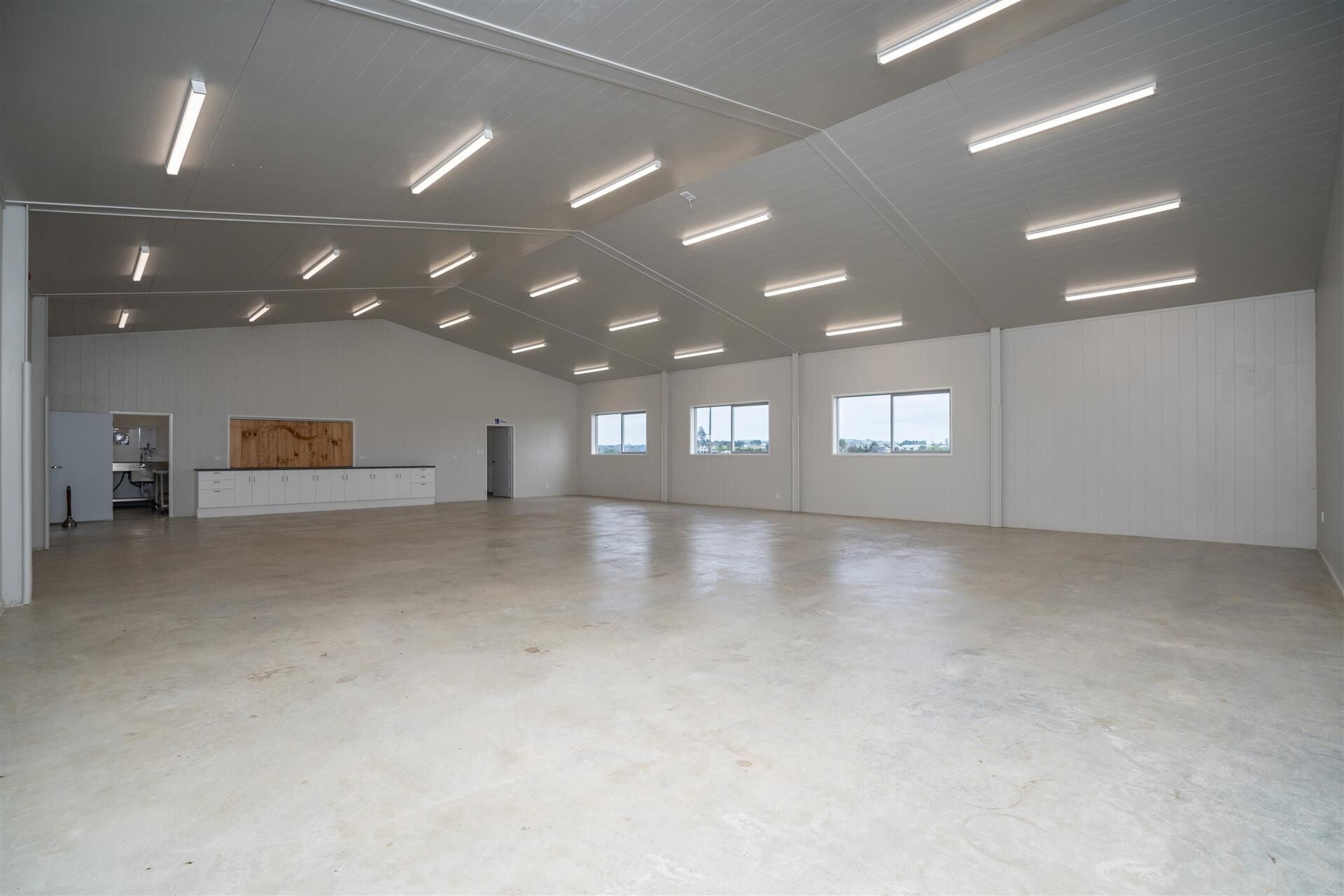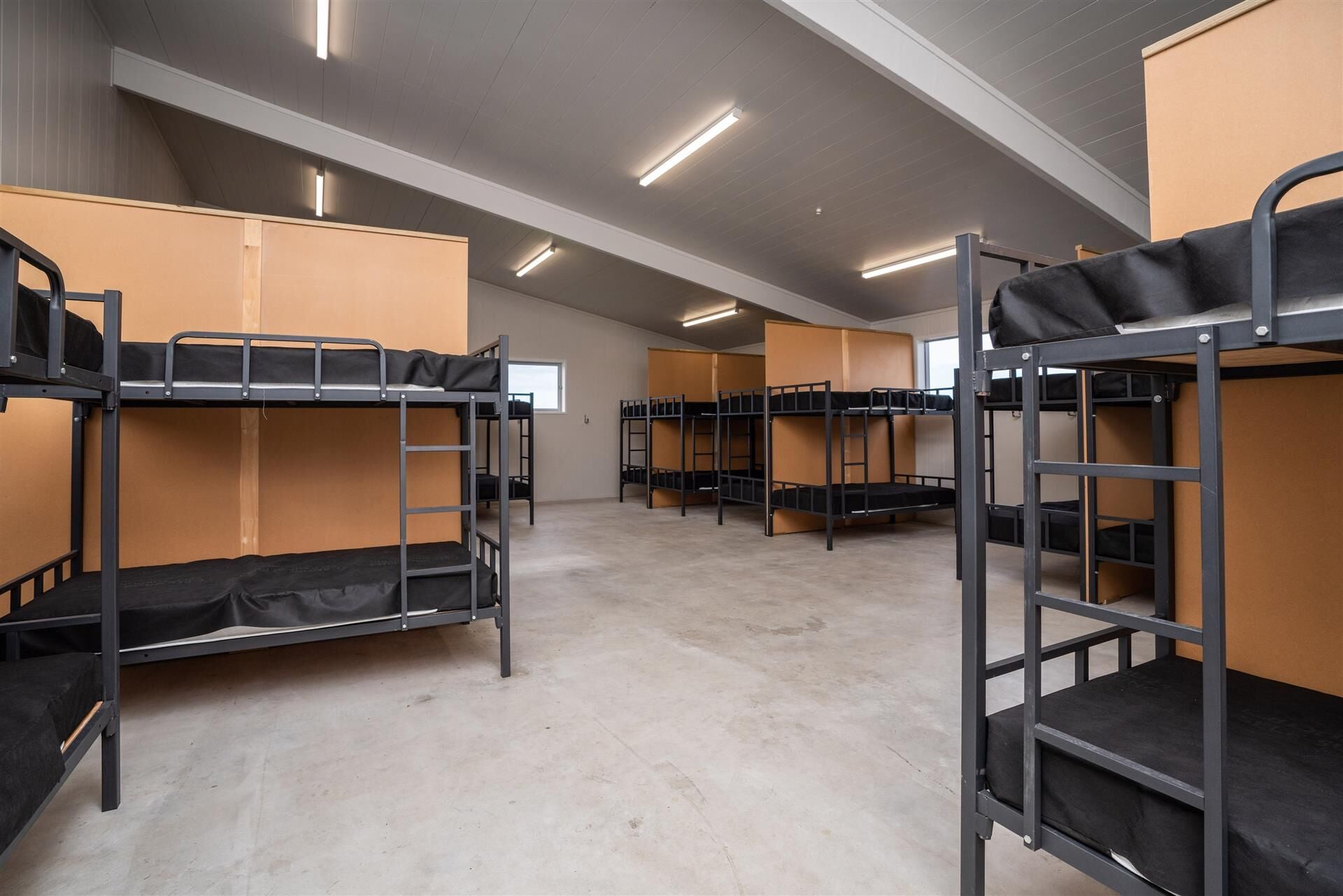Kumara education complex for sale is New Zealand’s own Field of Dreams property

The brand new complex is located some eight kilometres south of the Northland township Dargaville - in an area which produces 75 percent of New Zealand’s kumara crop.
The centre has been built by local couple Warren and Mavis Suckling – who have grown kumaras in the North Kaipara region for several decades. Infrastructure involved with the main complex includes:
• A full commercial-grade kitchen with stainless-steel benching, extraction unit, combi’ oven, convection oven, four-hob grill, hot plate, dishwasher unit, and upright refrigeration and chiller cabinets
• A high-stud concrete floored hall/auditorium
• A separate ablution block containing two wheelchair-friendly toilet and shower units and another six standard toilet and shower units, with water heated through a Rinnai hot water heater and all connected to a septic tank and waste water system
• Two separate dormitory blocks – one capable of accommodating up to 37 people and the other fitted out to sleep up to 36 people in bunk bed sleeping arrangements
• A 10 square metre stand-alone administrative offices and adjoining sick-bay
• A flood-lit tennis court and
• A 55 square metre two-bedroom owner/manager’s cottage.
The buildings sit on some 3.75 hectares of fertile horticultural land. The freehold land and buildings at 39 Maxwell Road are now being marketed for sale at auction on July 31 through Bayleys Dargaville. Salesperson Catherine Stewart said the property was in a ‘turn key’ state – fully connected to all services and ready to open as a commercial accommodation or function venue.
“The property is literally like something out of the hit movie Field of Dreams,” Ms Stewart said.
The iconic 1989 Hollywood movie Field of Dreams tells the story of Iowa farmer Ray Kinsella – played by Kevin Costner – who hears a voice in his corn field telling him: “If you build it, he will come.”
Kinsella interprets the message as an instruction to build a baseball field on his farm, which he does much to the wonderment of his neighbours. Baseball legend ‘Shoeless’ Jock Jackson and seven other members of the Chicago White Sox, banned from the game for ‘fixing’ the 1919 World Series baseball championship, then re-appear from the heavens and begin playing baseball on the converted cornfield pitch.
“Warren and Mavis are incredibly passionate about growing kumara. It was their dream to build a venue and facility which would attract the likes of school students and tourists to Dargaville to learn more about the cultivation and use of kumara… and the centre now for sale was the result,” Ms Stewart said.
“However, it has taken so much out of them over the years in getting the centre to this stage that they are ready to retire and hand over the reins to another entrepreneur to take the complex to the next stage.
“The site has never been used.”
The complex’s buildings are designed in a horse-shoe configuration – surrounding a flood-lit tennis court. The two accommodation wings, ablution blocks, and kitchen/dining hall are linked by a network of covered walkways.
Ms Stewart said the venue had consented parking for two buses on the concreted driveway, with additional parking space for up to 15 vehicles on an adjoining metalled yard. Both areas were illuminated at night by spotlight towers – with electricity lines linked to the property’s own transformer.
Water for the showers, bathroom and kitchen amenities is collected off the building rooves and reticulated in a quartet of 30,000 litre plastic tanks located on the property’s boundary. Two additional separate 30,000 litre water storage tanks have also been installed at the site for exclusive use by the fire service – with a fire hose connection installed.
Sewage is fed into an underground 30,000 septic tank and concrete pumping chamber, while waste water is pumped along a pipe network to irrigate a landscaped garden area.
Ms Stewart said the property could open as a seasonal labour camp.
“While the property was created to be a kumara education facility, it could just as easily operate as a seasonal workplace accommodation venue. Every season over March and April scores of migrant workers come into the Dargaville and Northern Kaipara area from the Pacific Islands – with the region’s backpackers and shearer’s quarters used to house them,” she said.
“Being in the heart of ‘Kumara country’ this venue is perfectly fitted out to accommodate such a casual labour force – with the two separate dormitories’ and bathroom blocks allowing for the appropriate segregation of male and female workers.
“It could also accommodate a similar workforce under the Government’s One Billion Trees Programme – with seedling planting taking place over the autumn and winter months,” Ms Stewart said.
Figures from the economic data-analysis agency Infometrics show that the agriculture, forestry and fishing sector contributed 9.1 percent of Dargaville’s gross domestic product in the year ending march 31 2018, with the construction sector close behind, contributing 8.6 percent of Dargaville’s gross domestic product.
The same Infometrics report showcased that total employment in Dargaville was up 8.2 percent in the year to March 31, 2018 – compared to the national increase of three percent of the same period. Over a 10-year period, employment in Dargaville grew by an average of 2.5 percent annually – compared to 1.3 percent for the whole of New Zealand.
“Those workers employed in the rural parts of the province need somewhere to stay, so there is an opportunity for any new owner of the Maxwell Road complex to establish the venue as a short term accommodation provider,” Ms Stewart said.
“It has also been suggested the site could operate as a place of religious worship, or a self-sustaining lifestyle commune. The land portion of the location includes a substantial paddock of kumara planted in the nutrient-rich alluvial Kaipara flat soil - yielding healthy crops of red and beauregard varieties of sweet potatoes every autumn.
“The rich soils could easily sustain a small market garden of alternative vegetable crops, while other parts of the property could be developed to sustain a small number of farm animals or livestock capable of feeding a small congregation.”



